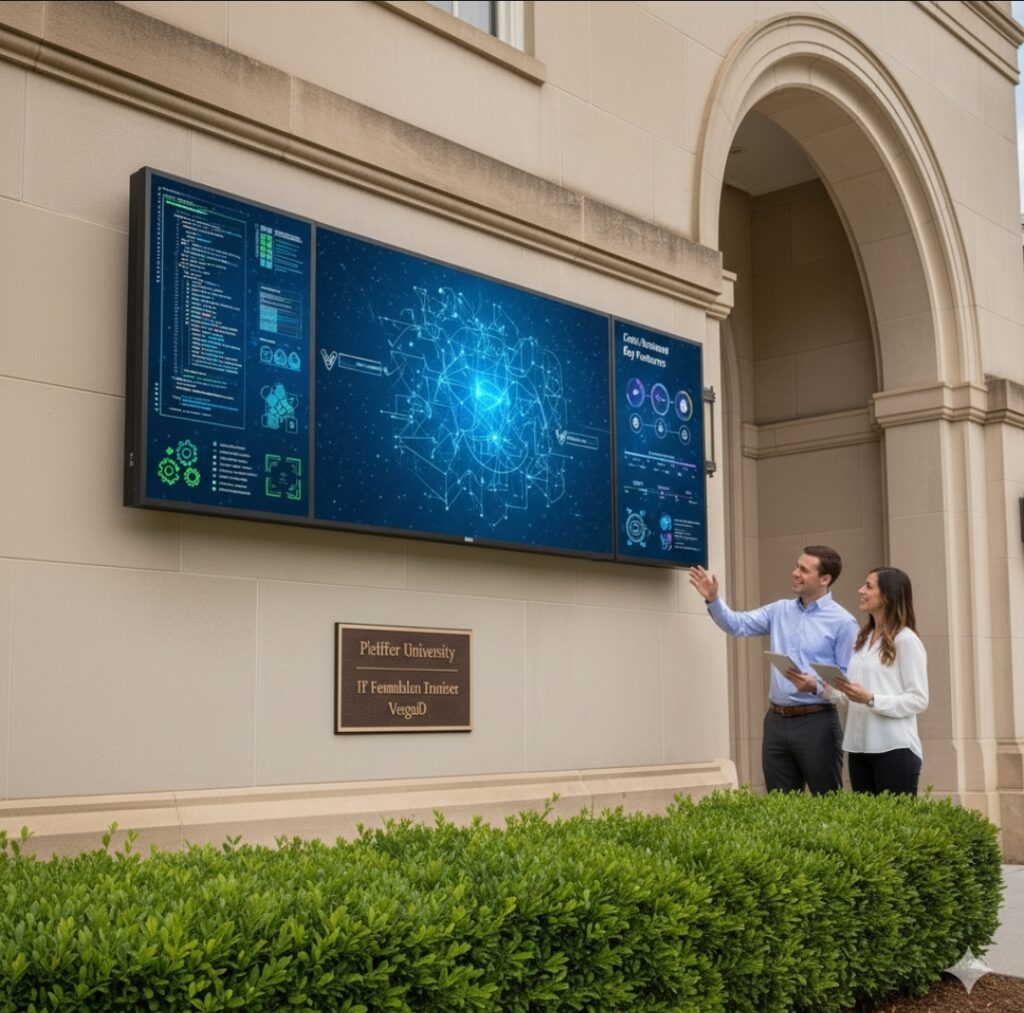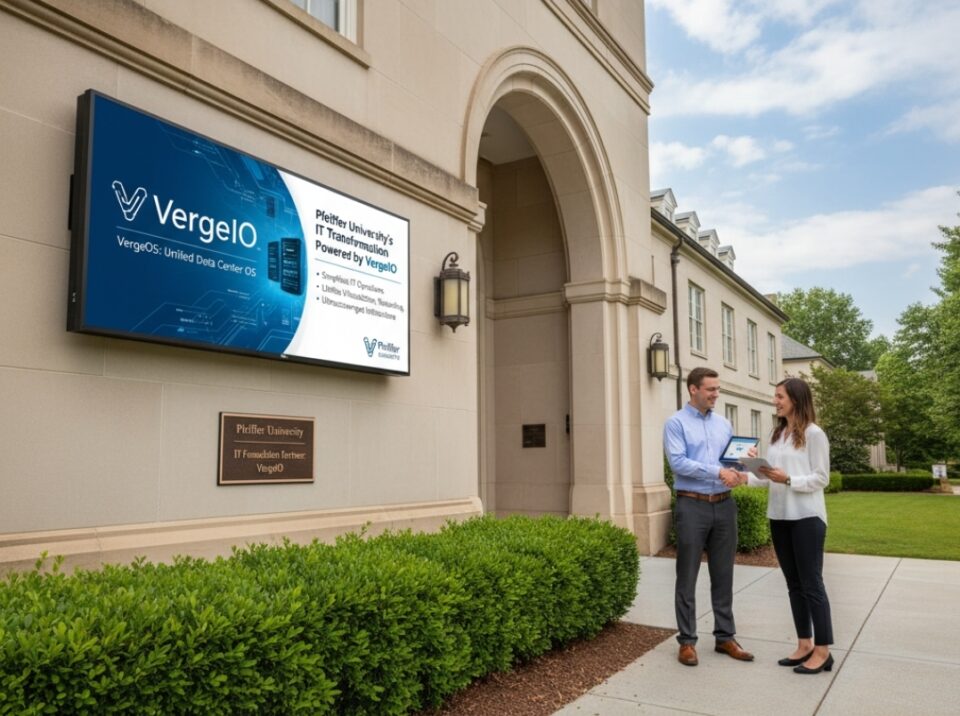When IT Infrastructure Becomes a Strategic CX Advantage: How Pfeiffer University Bold Decision Shows the Future of Experience Excellence
You’ve seen it before. IT costs spiraling out of control while system performance declines. Students frustrated with outdated technology. Staff struggling with complex infrastructures that drain time and resources instead of enabling excellence. Sound familiar? This scenario plays out in countless organizations today, but there’s a powerful lesson emerging from Pfeiffer university bold decision to break free from this cycle.
Pfeiffer University just made headlines by cutting their IT infrastructure costs by 85 percent while simultaneously enhancing both student and employee experiences. Their secret weapon? A strategic platform replacement that demonstrates how smart infrastructure decisions can transform customer experience (CX) and employee experience (EX) simultaneously.
This isn’t just another cost-cutting story. It’s a blueprint for how organizations can leverage infrastructure modernization to create competitive advantage through superior experiences.
The Hidden CX Cost of Infrastructure Complexity
When Ryan Conte, CIO at Pfeiffer University, faced VMware’s new pricing model that would cost $35,000-$45,000 annually, he encountered more than just a budget problem. He faced a fundamental CX challenge that many organizations overlook: how IT infrastructure complexity directly impacts experience quality.
“VMware wasn’t calling us back,” said CIO Ryan Conte. “VergeOS was the only product I looked at that didn’t need hardware. Others told me to buy new, but I had good servers with life left in them. VergeOS, let me use them.”
The traditional approach would have been straightforward – find budget or reduce services. Instead, Conte recognized that infrastructure decisions are experience decisions. Every server refresh, every licensing agreement, every maintenance window affects the experiences of every stakeholder your organization serves.
Research confirms this connection. Studies show that customer-centric digital transformation can generate 20 to 30 percent increases in customer satisfaction and economic gains of 20 to 50 percent. When IT infrastructure enables rather than hinders experience delivery, organizations unlock dramatic performance improvements.
Pfeiffer University situation illustrates a critical insight: legacy infrastructure doesn’t just cost money – it costs opportunity. Every dollar spent maintaining complex, fragmented systems is a dollar not invested in experience innovation.
VergeOS
VergeIO and its core software VergeOS form the foundation of Pfeiffer University’s IT transformation. VergeOS is a single integrated software platform that unifies virtualization, storage, and networking into one cohesive data center operating system. This ultraconverged infrastructure simplifies IT operations by consolidating multiple functions traditionally handled by separate systems into one seamless interface.
Key features of VergeOS include built-in multi-tenancy that allows complete isolation of virtual data centers, advanced automation through VM and tenant recipes, real-time monitoring and analytics, and enhanced security capabilities such as ransomware protection and compliance simplification. Its per-node licensing model significantly reduces costs compared to VMware’s core- or processor-based licensing. VergeOS supports rapid VM migration and disaster recovery with independent snapshots and near real-time replication.
This powerful convergence allows organizations like Pfeiffer University to cut IT infrastructure costs by up to 85%, repurpose existing hardware efficiently, and improve agility and performance while maintaining high security and availability standards. The unified and streamlined nature of VergeOS directly contributes to enhanced experience for both IT staff managing the infrastructure and students benefiting from more reliable, responsive technology environments.
When Students Become Innovation Partners
What makes Pfeiffer University transformation particularly compelling is how they turned their infrastructure modernization into a learning laboratory. Three senior Computer Information Systems students – Mathius Dessureau, Jason Giesbrecht, and Justin Giesbrecht – played pivotal roles in evaluating alternatives and implementing the new platform.
This approach reveals a sophisticated understanding of experience design. Rather than treating infrastructure as a back-office concern, Pfeiffer recognized that involving students in the transformation process created multiple value streams: enhanced learning outcomes, real-world experience for students, and deeper stakeholder buy-in for the new platform.
The results speak volumes about the connection between infrastructure and experience. When employees and customers can participate in improving their own experiences, engagement levels soar. Digital transformation significantly boosts employee productivity by streamlining processes, improving collaboration, and providing actionable insights, making organizations more agile and competitive.
The Economics of Experience Excellence
Traditional IT discussions focus on technical specifications and licensing costs. But Pfeiffer’s transformation demonstrates how infrastructure decisions create cascading economic impacts across the entire experience ecosystem.
Consider the financial implications of their choice:
Direct cost avoidance: $35,000-$45,000 in annual VMware licensing fees eliminated
Hardware optimization: Existing HP Gen9/10/11 and Dell servers repurposed instead of replaced
Operational efficiency: 30-40 virtual machines migrated in-house without professional services
Risk mitigation: Built-in disaster recovery and ransomware protection eliminated separate $20,000-$30,000 backup project
These savings enabled resource reallocation toward experience-enhancing initiatives. When organizations reduce infrastructure complexity, they free resources for customer-facing improvements and employee development programs.
Industry data supports this pattern. Organizations implementing ultraconverged infrastructure report 50 percent reductions in total cost of ownership while achieving better performance and reliability. The key insight: simplification enables innovation.
Beyond Technology: The Experience Design Revolution
Pfeiffer University success illustrates a fundamental shift in how organizations should approach infrastructure decisions. The question isn’t “Which technology platform should we choose?” but rather “How can infrastructure enhance the experiences we deliver?”
This perspective transforms infrastructure from a cost center into a strategic enabler. When Conte evaluated alternatives, he applied experience-focused criteria:
Simplicity over complexity: One integrated platform instead of multiple point solutions
Enablement over maintenance: Tools that empower users rather than burden IT staff
Flexibility over rigidity: Systems that adapt to changing needs without major overhauls
Partnership over vendor relationship: Responsive support that treats customers as collaborators
Research shows that 77 percent of leaders use digital transformation to gain advantage over competing organizations. The differentiator isn’t the technology itself – it’s how effectively that technology enables superior experiences.
The Ripple Effect: How Infrastructure Impacts Every Touchpoint
One of the most underestimated aspects of infrastructure transformation is its impact on experience consistency across all touchpoints. When Pfeiffer consolidated virtualization, storage, networking, and data protection into a single platform, they didn’t just simplify IT operations – they created the foundation for consistent experience delivery.
This consolidation has profound implications for both customer and employee experiences. Unified platforms eliminate the integration challenges that often create experience friction. When systems work seamlessly together, users experience seamless interactions.
Studies indicate that 94 percent of IT decision-makers believe investing in communications and collaboration solutions improves employee engagement and satisfaction. Modern infrastructure platforms enable these collaboration tools to perform optimally, creating positive feedback loops between technology capability and experience quality.
Strategic Lessons for CX and EX Leaders
Pfeiffer’s transformation offers several strategic insights for experience leaders:
Infrastructure decisions are experience decisions. Every technology choice impacts how customers and employees interact with your organization. Evaluate options through an experience lens, not just a technical one.
Simplification enables innovation. Complex infrastructures consume resources that could be invested in experience improvements. Platforms that consolidate capabilities free resources for customer-facing initiatives.
Stakeholder involvement accelerates adoption. When customers and employees participate in infrastructure transformations, they become advocates for change rather than resistors.
Total experience perspective delivers superior outcomes. Considering both customer and employee experiences in infrastructure decisions creates synergies that benefit all stakeholders.
Partnership approach reduces risk. Vendors who provide responsive support and collaborative relationships enable faster problem resolution and reduced downtime.
The Future of Experience-Driven Infrastructure
Looking ahead, organizations that treat infrastructure as an experience enabler will gain sustainable competitive advantages. The convergence of artificial intelligence, edge computing, and ultraconverged platforms creates unprecedented opportunities to enhance both customer and employee experiences through smart infrastructure choices.
Forward-thinking organizations are already recognizing this shift. They understand that infrastructure modernization isn’t just about cost reduction or performance improvement – it’s about creating the technological foundation for experience excellence.
The most successful experience transformations will be those that integrate infrastructure strategy with experience strategy from the beginning. When technology platforms enable rather than constrain experience innovation, organizations can respond more quickly to changing stakeholder needs and market conditions.

Key Takeaways for Experience Excellence
Pfeiffer University’s 85 percent cost reduction while enhancing experiences demonstrates that infrastructure and experience strategy must align. Their success provides a roadmap for organizations seeking to maximize both operational efficiency and stakeholder satisfaction.
The core lesson is straightforward: treat infrastructure as an experience enabler, not just a technical requirement. When platforms simplify operations, reduce costs, and enhance capability simultaneously, they create the foundation for sustainable competitive advantage.
Smart infrastructure choices don’t just reduce expenses – they free resources for experience innovation and create the operational flexibility needed to respond to evolving stakeholder expectations. In an era where experience differentiation determines market success, infrastructure decisions have never been more strategic.
How are you evaluating your infrastructure choices through an experience lens? The organizations that answer this question most effectively will define the future of both customer and employee experience excellence.

